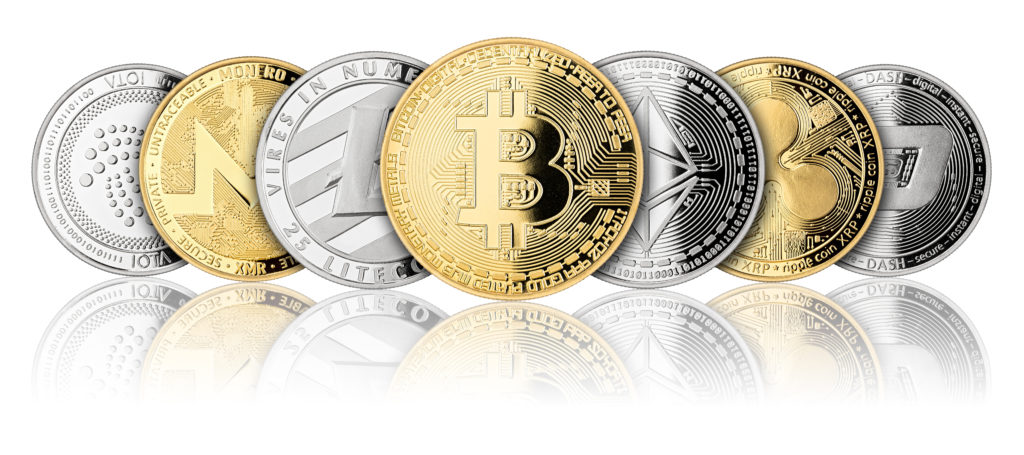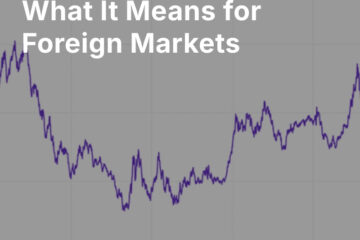The post-pandemic bull market is now getting choppy as it encounters a number of real-world headwinds — the reduction of monetary stimulus, growing conflicts over further fiscal stimulus, slowing liquidity growth, official acknowledgment of persistent inflation, and the growing concern of market participants that a Fed “policy mistake” is unfolding.
That choppiness has been evident in bitcoin and other cryptocurrencies, which in spite of their strong performance during the pandemic rally, have experienced sharp declines from their recent all-time highs. In the short term, digital assets are very much correlated with the highest-risk and most speculative risk assets, such as profitless thematic tech stocks and meme stocks. Given bitcoin’s history, we would not be at all surprised to see it correct as far as the mid-$20 thousand mark, and many altcoins to correct even more deeply. We would also regard such a correction as a buying opportunity.

We’ve recently done some personal exploration of the current state of the consumer-facing crypto ecosystem, and have some reflections and observations to report. This information is more long-term focused than the current toppy speculative frenzy that has once again enveloped digital asset markets. (It’s probably another year when anyone known to have some knowledge about cryptos will get cornered at holiday parties and pumped for opinion and information.) Follow along to hear about our recent crypto adventures. If you have any questions, or would like to discuss any aspects of this topic further, don’t hesitate to call our office.
Getting Paid For Your Ad Consumption
One of our analysts has been using the Brave internet browser for much of the past two years. Brave is a privacy-focused browser derived from Google Chrome, with a number of built-in features to block advertising, web trackers, and other intrusions. It makes for a much more pleasant browsing experience on ad-heavy sites. Brave has implemented a protocol by which users can opt-in to unobtrusive pop-up ads, and be rewarded for this opt-in with distributions of a native cryptocurrency, BAT (basic attention tokens). Over the course of the past 18 months, the Brave user in our office accumulated BAT without ever linking them to a wallet and claiming them.
We decided to claim these tokens to see how easy they would be to redeem for “real-world” goods. The browser allowed us to link to one of two online custodial wallets, Uphold or Gemini, into which we could transfer our accumulated BAT rewards. We chose Uphold, and after a brief KYC process, were able to transfer the BAT and use it to fund an instantly created virtual MasterCard debit card. We then used that debit card for a purchase on Amazon, with the accumulated BAT amounting to a small dollar figure. Real-world goods were delivered.
Some observations on this process. First, digital assets converted quickly and easily into real-world purchasing power. But second, more interestingly, this model upends the traditional internet advertising model. Virtual reality pioneer and tech critic Jaron Lanier is famous for saying that if an online service is “free,” you are the product (that is, the platform is harvesting data from you and selling those data to third parties for a profit — users themselves are simply a “data farm”). Brave is turning the tables, allowing users to opt in and directly claim a share of the advertising revenue to spend as they see fit. Currently, our opt-in on Brave appears to be generating about a dollar a week, and it is remarkably easy to spend that money in the real world. Your voluntary ad consumption — and you can directly tailor the quantity and type of ads you see — will buy you perhaps four dollars’ worth of morning coffee a month. That seems like a worthy innovation.
Perhaps more to the point, Brave’s reward system could easily be enough to fund a basic, secure email service, such as Swiss-based ProtonMail. In essence, the system permits a savvy user to see ads they want to see, and rewards them in exchange with enough funds to pay for an encrypted, privacy-respecting email service to replace webmail services that track and compile their data.
Of course, Brave’s integration also resulted in a new customer for Uphold, and we quickly used Uphold as a gateway to other services — using their virtual crypto-funded debit card, as noted above, as well as using a regular bank credit card to purchase experimental positions in other cryptos for the purpose of exploring the cost and ease of a number of other crypto transactions.
Our research process has also involved testing and exploring other service providers — Coinbase, eToro, Bakkt, PayPal, Venmo, and more.
Using a Software Wallet
Having bought some other coins on Uphold, we wanted to experiment with taking those coins off the exchange to hold in a software wallet. A software wallet is essentially a piece of software that runs on your phone or computer, which holds the cryptographic keys permitting you to send and receive cryptocurrencies — whether bitcoin, ether, tokens on the Ethereum blockchain, or any of the hundreds of other crypto projects currently in development.
In essence, if the exchange is like a bank, where the custodian has ultimate control of your assets, promises to do what you want them to do with them, and assumes responsibility for their security, your software wallet is like a safe in your house. You are in direct possession of the keys, and if you lose them, you lose access to the funds. If your phone or computer were hacked or compromised, thieves could plunder your accounts. The user bears the entire burden of security.
We wanted to buy a few coins that were not available on Uphold. So we bought Dash (for about a 2% fee), a crypto known for rapid and inexpensive transactions, and sent it through an app called Changelly, which (for about another 2% fee) will convert almost any crypto into almost any other crypto. Changelly received our Dash, converted it into Solana, Cardano, and Monero, and forwarded it on to our software wallet.
All of these exchanges and intermediaries are much easier to use, and are much more smoothly integrated with the legacy financial system, than they were during the crypto bubble of 2017. However, they are still not quite ready for prime time — they require a significant level of tech comfort to employ, and less tech-confident users might well rationally fear that a mistake could result in lost funds.
Also, until the coins arrived at our software wallet, they had to be acquired and exchanged through a number of intermediaries — all of whom extracted fees, as noted above. A strict peer-to-peer transaction — in which, for example, you sent crypto directly from your personal wallet to a recipient’s wallet — can be extraordinarily cheap. These are the sorts of transactions that make traditional money transfer agents, such as Western Union, tremble and look at their growth forecasts. But for now, at every chokepoint where crypto intersects with the legacy financial system, there are still intermediaries extracting a take rate.
Crypto and the Legacy Financial System

The eagerness to embrace crypto on the part of financial industry incumbents derives from one of two sources: either they are simply eager to reap speculative gains (for example, hedge funds and prop trading desks), or they are eager to ensconce themselves as gatekeepers between the fiat and crypto universes. The latter includes many different actors, from disruptive fintech startups to the largest banks on the planet.
Two developments threaten this latter strategy: crypto self-sufficiency, and decentralized finance (DeFi).
Self-Sufficient Crypto? Not Yet
First is the prospect of crypto becoming a self-sufficient ecosystem, in which crypto adoption becomes sufficiently widespread that wages, salaries, goods, and services are transacted directly in crypto, rather than in fiat currencies. Crypto volatility, for now, makes this problematic, with most coins subject to such wild swings that commercial and retail users attempting to rely on crypto for daily use would be subjected to impossible value fluctuations. Stablecoins, which are pegged to fiat currencies, are one potential response. (Other responses include tokens pegged to various real-world assets; there are tokens on the Ethereum blockchain linked in an auditable and verifiable way to gold bars held in bullion vaults.)
However, stablecoins themselves are not ready for primetime. The largest, Tether, is suspected by many analysts to be fraudulent, and lacking the dollar reserves that allegedly back it. Most others exist on the Ethereum blockchain, where low transaction throughput has made network transactions so expensive that these coins are useless for small transactions. Ethereum is slated for some radical changes which may make the network more functional, but these have not yet materialized, and other blockchains that promise better functionality are still in very early development and deployment. Until stable value and adequate transaction throughput is accessible in the crypto ecosystem, widespread adoption of crypto for daily use cases will be impossible. However, those characteristics are visible on the horizon.
Decentralized Finance? Very Early Innings
The other development that might undermine the role of legacy financial institutions is “decentralized finance” — a catch-all term for financial functions that are enacted by “smart contracts” on various second- and third-generation, programmable blockchains. Trading, exchanging, borrowing and lending, interest payments, and many other transactions, on these platforms, are not enacted or enforced by any central party — they are all algorithmic processes written into a blockchain and processed in the same decentralized way that bitcoin transactions occur. Blockchain projects such as Ethereum, EOS, Solana, and Cardano are all vying to be the best platform for building such decentralized financial applications. So for example, rather than using a centralized exchange to trade between cryptos, users would employ decentralized exchanges, or “dexes,” some of which are already live — mostly, again, on the problematically slow and expensive Ethereum blockchain.
If the authorities decided that this or that coin was illegal and could not be transacted, they would be hard-pressed to shut down any such network, since its nodes might be present in dozens of national jurisdictions. All they could do is apply pressure to the chokepoints where crypto intersects with fiat. But if a point of adoption were reached where many users were comfortable transacting much of their daily life without fiat, regulatory authorities would need to become very “creative” to maintain their power.
If more commercial and retail users begin to believe that crypto is superior to fiat — whether because of a desire to evade taxes and regulations, or because fiat is perceived to be poorly managed and eroding in value due to inflation — that will apply market pressure to speed the development of crypto ecosystems as noted above. We believe this is most likely to occur initially in nations with deeply corrupt and failing monetary and financial systems.
Crypto War
The picture sketched above explains the conundrum faced by financial authorities in developed countries. Ultimately, the emergence of a functioning crypto financial system — parallel to and independent of the legacy financial system — would threaten the ability of authorities to conduct monetary and tax policy. With the development of third-generation blockchains, decentralized finance, and stablecoins, such emergence is already discernable, and you can be sure that authorities are paying attention. We read recently that financial authorities enjoined several crypto exchanges from paying high interest rates they had offered on stablecoin deposits, up to 12% in some cases. How the regulators will respond when those interest rates are being paid not by a centralized exchange, but by a decentralized blockchain algorithm on a global network, and the proceeds can be converted into untraceable privacy coins on decentralized exchanges, is a question with no certain answer. This conflict will likely be an endemic one for many years to come — until a pax vivendi of one shape or another is finally reached.
Investment implications: Developed-world financial authorities are unlikely to be willing — or politically able — to resort to the draconian measures employed against cryptocurrencies by countries such as China. Crypto is already embedded enough that outright bans will be unlikely, particularly in the United States. More likely, they will continue to apply pressure to the chokepoints where crypto interacts with fiat, and continue to develop state-managed digital assets, such as central bank sponsored digital currencies and their derivatives, in an attempt to manage the risks of crypto while still permitting a level of financial innovation. Still, the crypto universe has developed by leaps and bounds since the last crypto bubble burst at the beginning of 2018, and even if a similar decline is in the cards after the most recent crypto run, ongoing development of crypto will continue, and continue to pose new problems for regulators — and fertile ground for speculators and early adopters. Decentralized finance is still in its infancy.
Please note that our mention of any crypto projects or service providers in this article does not constitute an endorsement of those providers or of any tokens associated with those projects. All potential crypto speculators must perform careful due diligence before using any service or purchasing any crypto asset.


